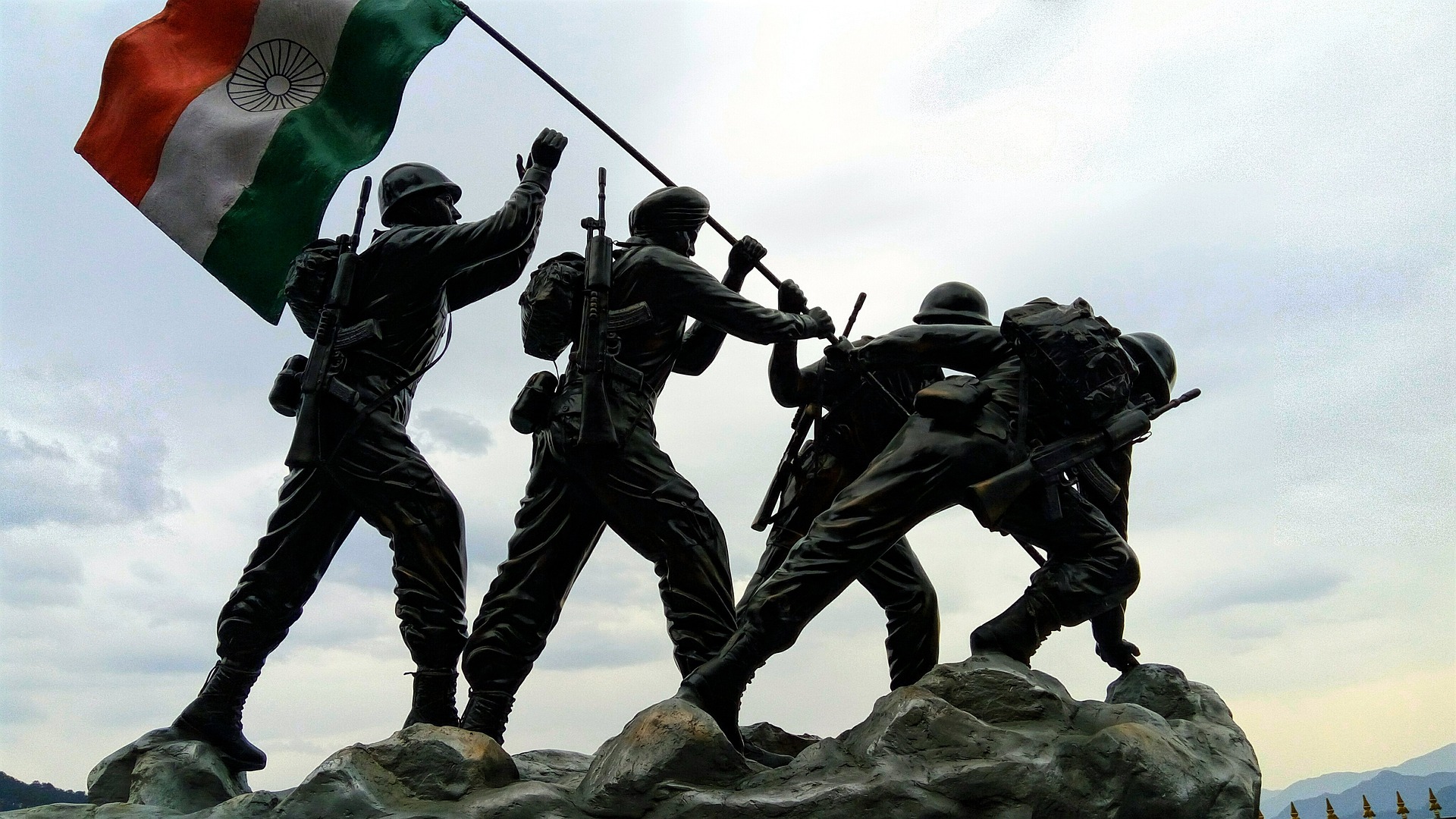List of Largest Armies of the World

Military is the backbone or savior for every nation.
Every nation faces various threats that can have psychological, economic, or natural origins, potentially undermining its authority and stability. These threats include hostility from neighboring countries, infiltration by terrorist organizations, and global economic fluctuations. Natural disasters such as hurricanes and pandemics also pose significant risks. To counter these threats, countries rely on their national security sector, which safeguards not only the well-being of citizens but also the financial stability of national institutions.
Stay tuned to check the Largest armies Of the world.
National security encompasses the well-being and prosperity of a nation’s population, as well as its relations with other nations. It involves protecting citizens, maintaining economic stability, fostering diplomatic relationships, addressing environmental and health concerns, and preserving sovereignty and national identity. These factors are crucial for promoting peace, stability, and the overall advancement of societies at regional and global levels. It is must to know about the stats of your country’s army. Today, Blog with Trends has come up with making you aware with the following: –
Military Size or List of Largest Armies of the World
The following countries have some of the largest armies in the world, based on the number of military personnel:
- China
- India
- United States
- North Korea
- Russia
- Pakistan
- Iran
- South Korea
- Vietnam
- Egypt
- Indonesia
- Brazil
- Thailand
- Myanmar
- Turkey
Here are the top 50 countries holding the biggest size of armies to protect its
boundaries: –
Number Name of Country Military Size
1 People’s Republic of China 2,035,000
2 India 14,60, 350
3 United States of America 13,9,950
4 North Korea 12,80,000
5 Russia 9,00,000
Know the Strengths of the Five Largest Armies Country
China
Since China began to open up and reform its economy in 1978, GDP growth has averaged over 9 percent a year, and more than 800 million people have lifted themselves out of poverty. There have also been significant improvements in access to health, education, and other services over the same period.
According to the white paper, Largest armies Of the world or China has consistently held the top position globally for the past 11 years in terms of manufacturing sector added-value and the production of more than 220 significant industrial products. The paper highlights China’s continuous status as the world’s largest manufacturing nation.
According to Global Firepower, China has available military manpower of more than 761 million people as of April 2023, along with 50 destroyer warships and 78 submarines, among many other military assets.
India
India possesses several comparative advantages that make it an appealing country for outsourcing and a cost-effective source of imports.
These advantages include:
Starting with lower cost of living. Compared to the United States, India has a lower cost of living, with a GDP per capita of $7,200, which is half that of countries like China and Brazil. India boasts a substantial pool of well-educated technology professionals. This skilled workforce is a valuable asset, attracting technology companies and call centers from the United States and other countries.
In addition to this, there are other two factors like English proficiency & diverse population. English serves as one of India’s official subsidiary languages, and a significant number of Indians are fluent in it. It is challenging to quantify the exact number of jobs lost to outsourcing, but estimates range from 104,000 to 700,000.
With a population of 1.3 billion, India is home to people from various economic and cultural backgrounds. This diversity can be both a strength and a challenge. Socioeconomic status often correlates with geographical location, and India’s three main regions exhibit distinct class and education divisions. A significant portion of these migrants is young and well-educated, contributing to the growth of India’s urbanized population, which reached 34% in 2018.
United States
The United States holds the advantage of being the third-largest country globally in terms of both population and size. With an estimated land area of approximately 3.8 million square miles (around 9.8 million square kilometers), it provides ample space for various activities. Moreover, the country is home to approximately 328 million people. These factors contribute significantly to the growth and productivity of the nation, harnessing its potential.
Most importantly, United States is the Home to the largest tech companies in the world. Apple, Facebook, Google, Amazon, Microsoft, Walmart, Pepsi, Coca-Cola, Netflix, Wells Fargo, Comcast, Cisco System, Chevron, Adobe, JP Morgan Chase, Boeing, Johnson & Johnson, Pfizer, Mastercard, Procter & Gamble, Merck & Co., Bank of America, Verizon, Intel, AT&T, Home Depot, UnitedHealth Group, and ExxonMobile are some of the world’s top company. They add tax revenue to the government.
North Korea
Analysts’ estimates suggest that North Korea may possess enough material to produce over one hundred nuclear weapons. The country has conducted successful missile tests, demonstrating the capability to target the United States with a nuclear warhead. North Korea boasts the world’s fourth-largest military, comprising over 1.2 million personnel, and is suspected of possessing chemical and biological weapons.
Despite previous summits involving North Korea, South Korea, and the United States to address denuclearization and the imposition of UN Security Council sanctions, Pyongyang persists in testing ballistic missiles. According to analysts’ assessments, North Korea potentially has the resources to manufacture more than one hundred nuclear weapons. They have effectively tested missiles with the capability to strike the United States using nuclear warheads. North Korea possesses the world’s fourth-largest military, consisting of over 1.2 million personnel, and is thought to possess chemical and biological weapons. Despite the implementation of UN Security Council sanctions and previous summits involving North Korea, South Korea, and the United States focused on denuclearization, North Korea continues to conduct ballistic missile tests.
Russia
Russia possesses one of the largest armies of the world ranking alongside China and the United States. Their air force and navy are equipped with advanced missiles and weaponry, including nuclear capabilities. In the event of a conflict involving any of these three nations, the global consequences would be devastating.
Russia holds a prominent position as a supplier of gas, oil, and mineral resources worldwide. While this grants them strength, it also exposes a vulnerability—the prices of these resources are highly influenced by demand, which, in turn, is impacted by Russia’s relationships with other countries. This volatile market has prompted Russian citizens to explore alternative industries, particularly the IT sector.
While the demand for minerals can fluctuate, they can also become leverage in the event of armed conflicts between Russia and other nations. Although this benefits Russia, it poses significant challenges for the rest of the world—precisely what Russia may strategically anticipate.
What is the Role of Army in Any Nation Building?
The role of the army in nation-building can be multi-faceted and encompasses several key aspects. Here are some common roles and contributions of the army in the process of nation-building:
Defense and Security
The primary role of the Largest armies Of the world is to protect nation’s territorial integrity, sovereignty, and citizens from external threats. By maintaining a strong defense capability, the army ensures the safety and security of the nation, & creating a stable environment for development.
Maintaining Internal Security
In addition to external defense, the army plays a crucial role in maintaining internal security. It assists in addressing domestic threats, combating terrorism, controlling civil unrest, and supporting law enforcement agencies in maintaining law and order. This or Largest armies Of the world ensures a peaceful and secure environment within the nation.
Disaster Response and Humanitarian Aid
The army often plays a significant role in disaster response and providing humanitarian assistance during times of natural disasters & emergencies. Their expertise, resources, and organizational capabilities are crucial in coordinating relief efforts, providing rescue operations, and offering support to affected communities.
Infrastructure Development
In many cases, the army is involved in infrastructure development projects that contribute to the nation’s growth and progress. This may include constructing roads, bridges, schools, hospitals, and other essential facilities in remote or underdeveloped areas. Which can improve access to basic services and promote socio-economic development.
Peacekeeping Operations
The army may participate in international peacekeeping missions authorized by the United Nations or other multinational organizations. These missions aim to promote peace, stability, and the rule of law in conflict-affected regions. By participating in peacekeeping operations, the army contributes to global security and demonstrates the nation’s commitment to international cooperation.
Nation-Building Support
The army can provide support in various nation-building activities, such as infrastructure development, capacity building, and community engagement. They may assist in constructing schools, healthcare centers, and other essential facilities, as well as provide training and skills development programs for local populations. Additionally, Largest armies Of the world can engage in community outreach initiatives to foster goodwill and trust among the population.
What is the Goal of National Security?
The government’s objective is to mitigate societal disruptions resulting from crises or disasters.
Through its national security strategy, it examines potential threats, countermeasures, and response plans. National security is at stake when one or more critical interests of the nation are jeopardized. These interests encompass:
- Territorial security, encompassing risks such as military occupation or prolonged
- flooding.
- Economic security.
- Ecological security.
- Physical security.
- Social and political stability.
- Disruptions to online financial transactions due to significant internet or power
- outages.
- Environmental harm caused by pollution, extreme heat, or drought.
- Violations of various kinds.
Which is more powerful India or China?
The government’s objective is to mitigate societal disruptions resulting from crises or disasters.
Through its national security strategy, it examines potential threats, countermeasures, and response plans. National security is at stake when one or more critical interests of the nation are jeopardized. These interests encompass:
